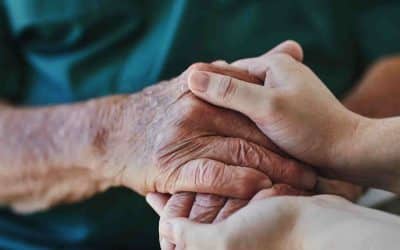For the 50th anniversary of the scientific newsletter “Population and Societies” the March issue has detailed 4 “demographic surprises”, which have actually already been established as known evolutions, according to “INED” (French National Institute for Demographic Studies). For the period from 1968 to 2018 the article mentions: the increase in life expectancy; postponement of births; the increase births outside marriage and the increased numbers of civil solidarity pacts or “Pacs”.
The increase in life expectancy
In the past 50 years, life expectancy has increased by 11 years, from age 71.5 in 1967 to age 82.5 in 2017 for both men and women. In recent years, however, the trend has started to taper off, suggesting life expectancy could soon plateau at a certain limit (+ 2 months per year since 2010 vs. + 3 months per year on average for the past 50 years).
Part of these statistics could be attributed to the decline in infant mortality which fell by 50% decrease from 1950 – 1960. It continued to drop during the following decade to 18% in 1970. Nevertheless it currently represents only a small percentage of mortality; and even if the decline would continue, it has almost no effect on life expectancy.
Life expectancy has increased due to the success in the combat against mortality in adults, in particular for individuals at an advanced age where most deaths occur. At one time, it was believed that mortality could not decrease beyond a certain point and that human lifespan would encounter a biological ceiling. It is significant to note how medical progress has contributed in recent years: preventative actions, early treatment and diagnosis. Currently the main causes of mortality are cardiovascular disease and cancer.
Nonetheless, life expectancy after age 60 has not increased in the past 3 years. In 2014 – 2017, it remained at 23.2 years for men, while decreasing slightly for women (27.7 years in 2014, 27.6 years in 2017).
Postponement of births
Since the end of the baby boom, the average is approximately 2 births per woman. The mothers’ age has risen steadily since 1977. While previously the average was age 24 for the birth of the first child, it has reached an average of 30.7 years in 2017. There may be several reasons associated with these increasingly late maternities: extended years of study, an increase in women’s employment and the growing desire to a child only when certain living conditions are ensured. As highlighted by “INED” there is an impact due to the widespread diffusion of different contraceptive methods and the legalization of abortion.
It is possible that the average age for maternity will continue to rise up to an average of age 32. In Spain, in 2015, it had already reached 31.9 years old. If women delay their pregnancy to later in life, they may not be able to become pregnant when they so desire. The average risk of not becoming pregnant increases with age: 4% at age 20 years; 14% at age 35, 35% at age 40, practically 85% risk of not being able to bear a child at age 45. Although some women who experience difficulties conceiving are tempted to resort to ART (Assisted Medical Techniques), many are not aware that medicine remains powerless after age 40, according to the news bulletin. Only 4% of babies born in 2016 had mothers aged 40 and over.
The increase in births outside marriage
In 1966, only 6% of the babies born in metropolitan France had parents who were not married. In 2016, the statistic has jumped to 58.5% or 435,000 out of 745,000 births. Clearly, the social norm has changed: births to unmarried couples now outnumber births to parents who are married. Frequently they occur in couples with a stable relationship. Nevertheless these births necessitate recognition by the father. In 2005, 5 out of 6 babies were recognized compared to 1 in 5 during the early seventies. In total, less than 4% of all babies are not recognized during their year of birth.
The increase in civil solidarity pacts (“PACs”)
From 2001 until 2016, the number of PACs has risen sharply from 20,000 to 192,000. Originally PACs were intended in part to allow same-sex couples to be registered in a civil union. However the sharp increase in PACs has largely been due to male-female couples, which has been multiplied by twelve in a 15 year time-frame (184,000).
Simultaneously the number of marriages decreased from 2001 to 2016, from 296,000 to 233,000 respectively. Conversely, if some PACs are contracted for simple legal or tax reasons, this is usually not the case for weddings.



